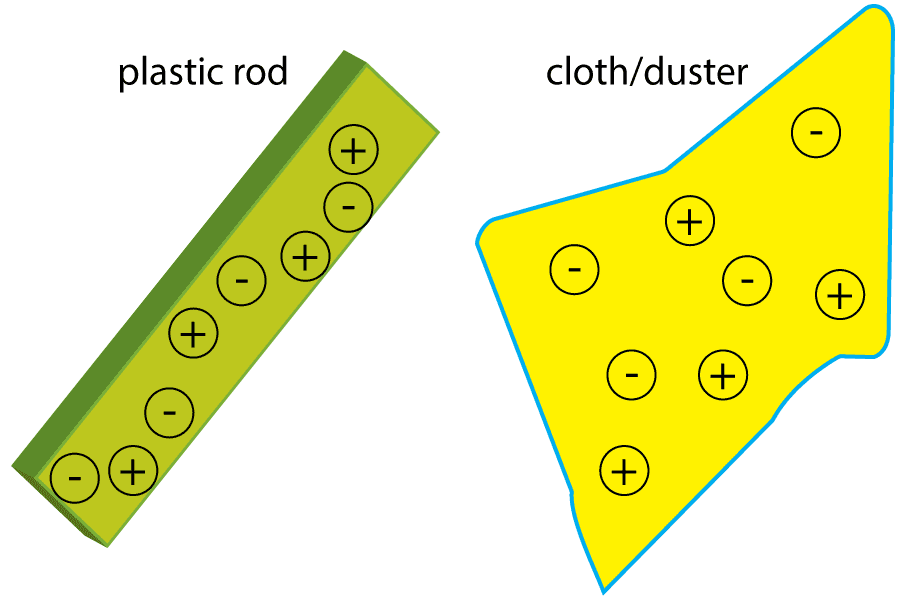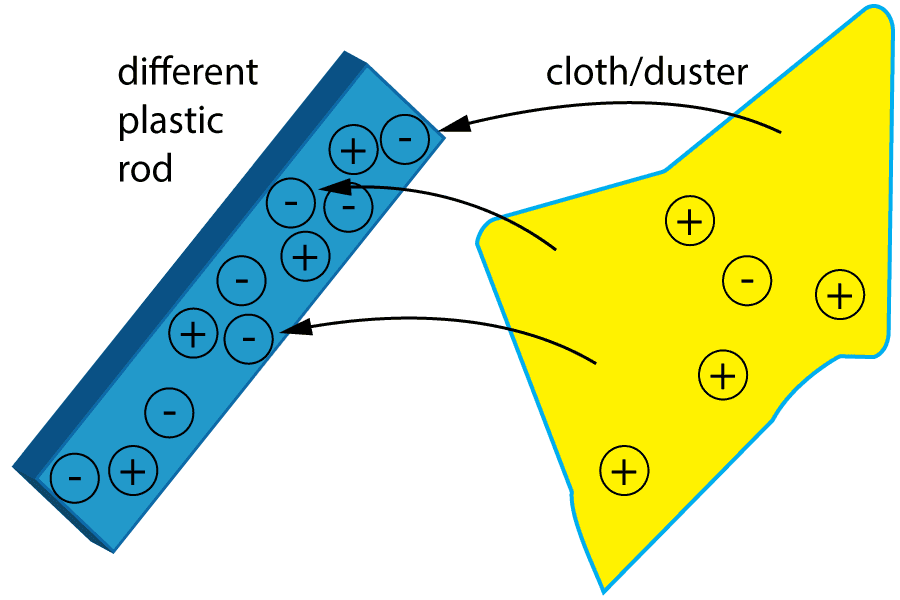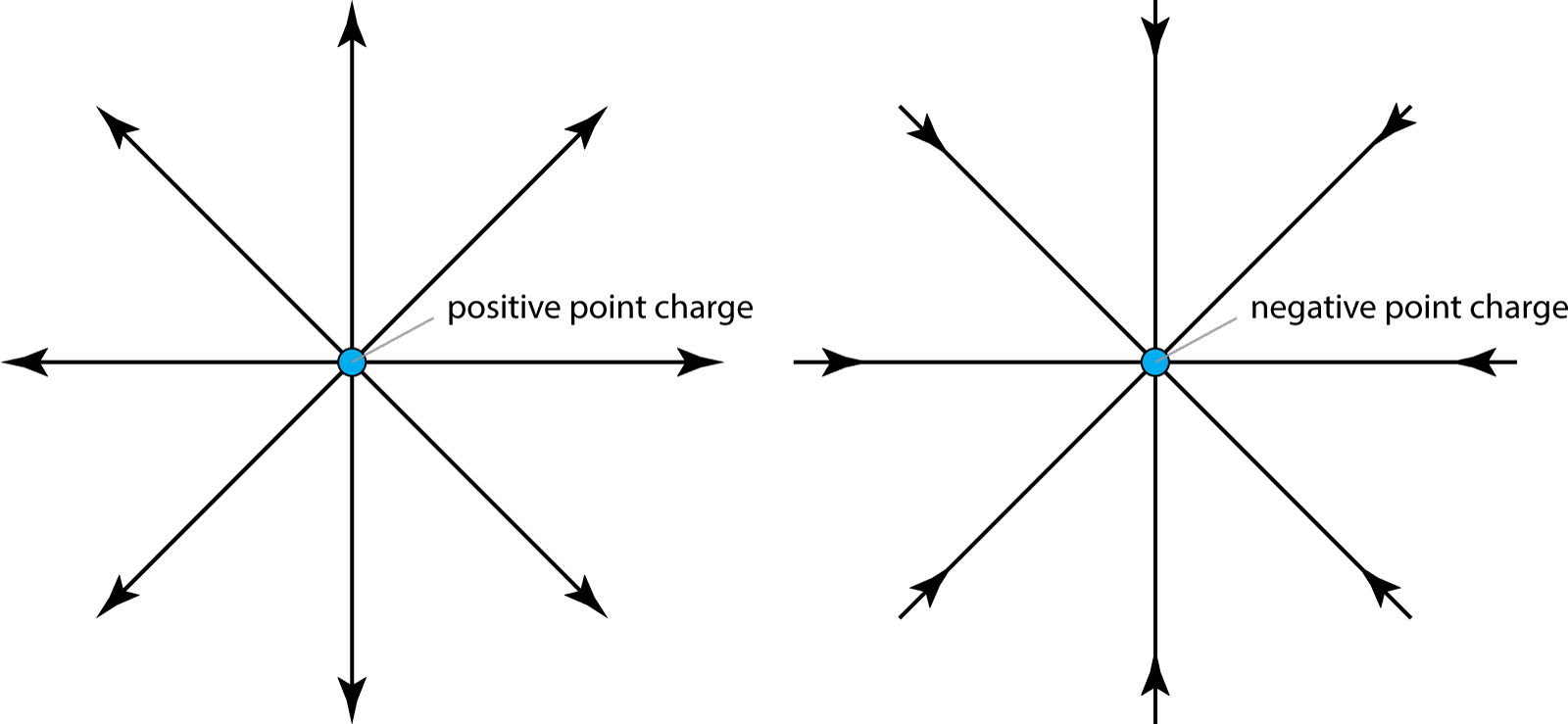Cambridge IGCSE
TOPIC 4A: ELECTRICITY
We rely on electricity in our everyday lives and often overlook its significance, yet it wasn't long ago that we had little understanding of it. The electric light bulb was invented in 1802, but it wasn't until the early 20th century that it became a standard feature in households.
In this section we will learn about the fundamental properties of electricity - what is it? What is actually moving in the wires?
In 1897, J.J. Thompson discovered the electron. You may have met electrons already in your chemistry course. He found that electrons were very small particles with a very small negative charge. This discovery led to an understanding of electricity - it is caused by a flow of free negatively charged electrons in metals (and many other solid conductors like graphite). The more electrons flow past any point in a second, the higher the current of electricity.

Figure 1 - Current in a metallic conductor
An electrical conductor is a substance with charges that can flow relatively freely, and when a voltage is applied, a significant current flows. As you should know, the most common conductors are metals, of which copper is probably the most widely used in the electricity industry. Other conductors include tap water and graphite (a form of carbon found in pencils).
Metals have a large number of free electrons that can move through the substance easily, creating the current.
Insulators do not have free electrons or any other charges that can move easily and produce a current. They are poor conductors with a very high resistance. Common insulators are plastics, rubber and air.
This is a really simple experiment: Build a circuit as shown in figure 2 using a lamp (light bulb) and a cell, but have a gap in the circuit allowing different materials to be inserted. If the lamp turns on, the substance is an electrical conductor. If not, the material is an insulator.

Figure 2 -Testing conductors and insulators
As the name implies, static electricity does not flow through substances - it stays in one place. It is made when charges build up on insulators.
The most simple way to produce static electricity is through friction. You should know how to perform a simple practical to produce static electricity and also to test that it is present, as shown in this video.
YouTube 1. Producing and demonstrating static electricity
The video shows how rubbing the plastic with the cloth produces friction, and it is this friction that produces a build-up of static electricity.
Simply rub the cloth on the plastic (or other insulator like Styrofoam or PVC).
To show that a static charge has been produced, try picking up small pieces of tissue paper as shown in the video. This demonstrates that a force has been produced between the plastic and the paper. You can then try other substances and see which ones work and which do not. Not all insulators work with this type of cloth duster, and the experiment needs to be in a dry, warm place. Static leaks away quickly in the presence of water, so if you are in a humid country, this experiment rarely works!
In the next video, we can see a wide range of demonstrations and some great tricks!
YouTube 2- Awesome tricks with static electricity (brusspup)
Insulators do not have freely moving electrons like metals. However, when we rub a cloth on an insulator we can 'dislodge' a few of the electrons on one surface, and they pass from one surface to the other, as shown in figure 3 here:
 |
 |
| Before the experiment | After rubbing with the cloth |
Figure 3 - Charging a rod with a cloth
This diagram simplifies the picture by only showing a few of the charges present - four of each type instead of billions! As can be seen in the first image, the cloth and rod have equal positive and negative charges, so both of them are neutral. (No net charge present).
However friction dislodges some of the charges. In this example, the negative electrons move from the rod to the cloth. This makes the rod have an overall positive charge and the cloth has a negative charge.
Some substances hold on to their electrons tighter than others, and so the direction of travel of the electrons depends on the substance used. In figure 4, a different plastic is used, resulting in the electrons moving in the opposite direction:

Figure 4 - Producing a negative static charge on the rod
In this example, the negative electrons now move from cloth to rod, leaving the rod negative and the cloth positive.
Note that it is ONLY negative electrons that move - the positive charges (protons in the nucleus) are not able to move through friction.
You do not need to learn which plastics turn positive or negative, only how the process works.
Just like magnets, static charges produces forces of attraction and repulsion, and the rules are very similar:

Figure 5 - Static repulsion and attraction
Both of the YouTube videos at the start of this section show uncharged objects being attracted to a charged one. This is the standard demonstration of static electricity, although why it happens is quite tricky, as explained here:
An uncharged piece of paper has billions of positive and negative charges, in equal numbers. In our simplified example, we will look at a few of these charges. The paper has a neutral charge overall. However, when a charged rod is held nearby, the charges separate. In this example, the negative charges are attracted upwards towards the positive rod, leaving a net positive charge in the lower half of the paper. The movement can be microscopic, but again it is exaggerated here.
The negative charges are now slightly closer to the rod, so this has a stronger upwards force than the repulsive downward force. The resultant force pulls the paper upwards.

Figure 6 - picking up paper with static electricity
"Describe simple experiments to show the production of electrostatic charges by friction and to show the detection of electrostatic charges".
There are many ways of investigating static electricity. The most simple one is shown in the first video above, using a charged plastic rod (or similar) to pick up pieces of paper. Simply rub a plastic rod with a dry cloth (a plastic ruler will work fine). Then try to pick up small pieces of tissue paper with the rod. As discussed above, note that static electricity production works best in warm, dry conditions.
There are many other ways of demonstrating and detecting electrostatic charges, some of which show attraction and repulsion:
There is a really helpful simulation made by the University of Colorado that demonstrates the forces between charges, and there are lots of tools allowing the experiment to be modified in many ways. Click the image to take you to their site.
Colorado University: PhET static electricity simulation - click the image for link
Questions:
1. Describe a simple experiment to produce static electricity. Include an explanation of how you can demonstrate the presence of static electricity.
The answer should include a description of:
To demonstrate the presence of static, the insulator must be placed next to another insulator such as hair, small tissue paper pieces (or another named insulator that is free to move) and a force of attraction (or repulsion if similar charge) stated.
An electric field is simply a region where charges can produce a force. We show the force by drawing lines with arrows, called electric field lines. The lines show the direction of the force on a (small) positive charge. For example, here are the field lines around some charged spheres:

Figure 7 - Electric field lines around a positive and negative charged sphere
As you can see, the lines point away from the positive sphere to show that a positive charge would be repelled. The lines point inwards to the negative charged sphere to show a positive charge would be attracted towards the centre. These lines are 'radial' as they radiate away or towards one point (the centre of the sphere). The spheres here are typically made of a conducting metal so that the charges can flow through the material and are evenly distributed across the sphere.
The same pattern occurs around 'point' charges as shown here:

Figure 8 - Electric field lines around point charges
In between two charged metal plates, a small test positive charge would be repelled from the positive plate, and attracted towards the negative plate. This makes the field lines all 'uniform', drawn from the positive plate to the negative plate as shown in figure 9. (You do not need to draw field lines outside of the plates).

Figure 9 - Electric field lines between parallel charged plates
You need to be able to draw these electric field diagrams shown above.
The lines only show the direction of the force, but not how strong the force is. The lines are closer together near the surface of the sphere, and this indicates that the electric field is stronger. Therefore there will be a stronger force acting on other charges near the sphere's surface.
Any other charges brought within the electric field will experience a force of either attraction or repulsion. In general, the closer two charges are, the stronger the force between them as the electric field is stronger.
A thunder cloud has an enormous charge, and hence an enormous electric field. This strong field acts on all charges within the field of the cloud, even on the ground under the cloud. Although air is an insulator, the electric field can become so strong that this insulation breaks down, and charges start to flow between the ground and the cloud. A massive flow of charge results - what we see as a lightning bolt.
This happens on a small scale when we see sparks generated by static electricity - a very strong electric field causes charges to flow across the air gap between charged objects.
The video below shows that sparks produced by static electricity near fuel can be extremely dangerous!
YouTube 3 - The dangers of static electricity (Brainiac Store)
When charges move from one place to another, we describe it as a current of electricity, as discussed above. But how are current and charge measured?
The measurement for charge is named after Charles-Augustin de Coulomb. One coulomb (C) is an enormous charge compared to the electron - it would need about 8 billion billion electrons (or protons) to make 1 coulomb of charge. For historical reasons, the letter given to the measurement of charge is 'Q'.
Current in a circuit is defined as the rate of flow of charge - this means the charge flowing past a point per unit of time. Current is measured in amps (short for the 'ampere').
If 2 coulombs of charge flows through a resistor each second, then the current is 2 amps.
As a formula we can write:
| current = | charge |
| time |
| I = | Q |
| t |
[amps] = [coulombs] / [seconds]
Here are a few practice questions to gain confidence with this formula:
Example:
What charge flows through a 6V, 2A motor left on for 30 seconds?
Answer:
Although the voltage is given, this is not needed to solve this question!
We know that I = Q/t, and therefore Q = I t = 2 A x 30 seconds
Therefore charge flowing is = 2 x 30 = 60 coulombs
Questions:
2. A 0.3 amp household lamp is left on for 5 minutes. Calculate the charge flowing through the lamp in this time.
In 5 minutes, the time in seconds is 5 x 60 = 300 s,
We know that I = Q/t and so Q = I x t
Therefore Q = 0.3 x 300
Q = 90 coulombs
3. A 30 mA L.E.D. is left on for some time. During this interval, 6 C of charge flows through it. How long was the L.E.D. on for?
30 mA = 0.03 A, or if you are using standard form, 30 x 10-3 A (= 3 x 10-2 A).
If I = Q/t, then:
| t = | Q |
| I |
| t = | 6 |
| 3 x 10-2 |
Before electrons were discovered, scientists were drawing diagrams with current flowing from positive to negative around a circuit. The discovery of electrons confused things, because it meant the charge carriers in metals were negative, and must flow from negative to positive around the circuit! This problem was side-stepped completely - we still draw the 'conventional current' direction as positive to negative, and just ignore the flow of electrons in the opposite direction. Stick with your current arrows as positive to negative!

Figure 10 - Conventional current and electron flow
Have a go at this quick quiz on static electricity:
This link takes you to a quiz on electrical charge: